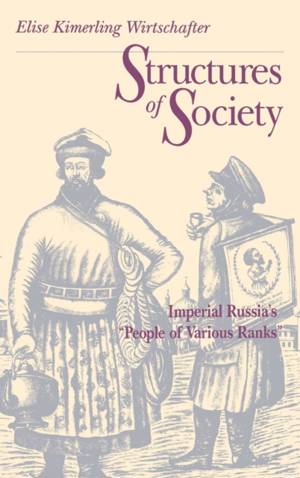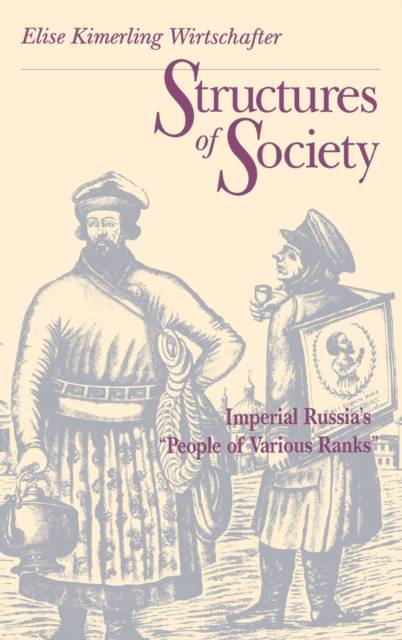
- Retrait gratuit dans votre magasin Club
- 7.000.000 titres dans notre catalogue
- Payer en toute sécurité
- Toujours un magasin près de chez vous
- Retrait gratuit dans votre magasin Club
- 7.000.000 titres dans notre catalogue
- Payer en toute sécurité
- Toujours un magasin près de chez vous
Description
A category of persons best defined by what they were not, the raznochintsy--"people of various ranks" or "people of diverse origins"--inhabited the shifting social territory between nobles and serfs in preindustrial Russia. Neither merchants nor clergy nor military servicemen, they may have been by occupation administrative clerks, teachers, artists, retired soldiers, or street vendors. In official society, they were outsiders.
In this first major study of the raznochintsy, Wirtschafter draws on a rich array of archival, legal, administrative, and public sources to show how this important but elusive category functioned in Russian society from the time of Peter the Great to the late nineteenth century. Challenging the traditional image of a rigidly hierarchical social structure, her conclusions indicate that there was much more mobility within imperial Russian society than historians have previously thought.
Developing a representational interpretation, Wirtschafter examines the raznochintsy as a legal, social, and cultural category. Focusing on the usages, meanings, and dynamic evolution of the category, she analyzes the origins of the raznochintsy as well as larger theoretical issues of social categorization and delimitation. Her depiction of a society where social boundaries were porous and social definitions fundamentally indeterminate provides a new perspective on some of the most stubbornly problematic themes in imperial Russian history.
Spécifications
Parties prenantes
- Auteur(s) :
- Editeur:
Contenu
- Nombre de pages :
- 232
- Langue:
- Anglais
- Collection :
Caractéristiques
- EAN:
- 9780875801902
- Date de parution :
- 01-11-94
- Format:
- Livre relié
- Format numérique:
- Genaaid
- Dimensions :
- 156 mm x 233 mm
- Poids :
- 576 g







